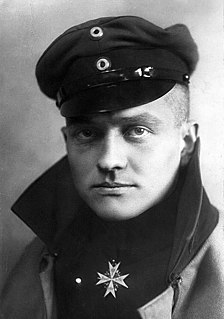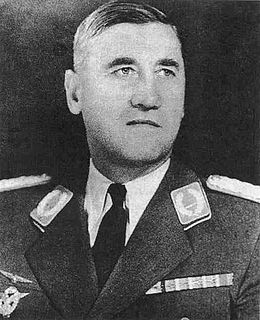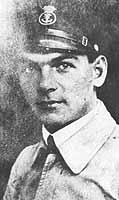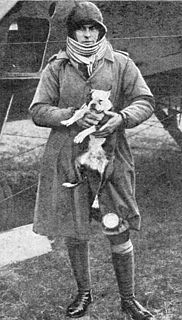Related Research Articles

The following are lists of World War I flying aces. Historically, a flying ace was defined as a military aviator credited with shooting down five or more enemy aircraft during aerial combat. The term was first used by French newspapers, describing Adolphe Pégoud as l'as, after he downed seven German aircraft.

Miroslav (Friedrich) Navratil was a Croatian soldier, pilot, and general who served in the armies of Austria-Hungary, the Kingdom of Yugoslavia, and the Independent State of Croatia.

Friedrich Hefty, also referred to as Frigyes Hefty, was a World War I Austro-Hungarian flying ace credited with five confirmed and five unconfirmed aerial victories. His early interest in aviation led him to drop out of school in 1913 and become a glider pilot. When World War I began, he served first as an aerial observer, then as a pilot. He scored his first aerial victory as an observer, on 7 October 1915. Once he became a pilot, he claimed nine other victories, four of which were verified. On 22 August 1918, he became one of the first combat pilots to bail out using a parachute. Hefty ended the war with ten awards of the Medal for Bravery.

Fregattenleutnant Friedrich Lang was a World War I flying ace. He emerged from obscurity to begin his military career in 1912 by training for sea duty. He was serving on SMS Balaton when World War I began. In March 1916, he transferred to aviation duty. He would score five confirmed aerial victories by war's end. He was one of only two flying aces of the Austro-Hungarian Navy, the other being Gottfried von Banfield. Postwar, Lang lapsed back into obscurity.

StabfeldwebelJohann Lasi was a World War I Austro-Hungarian flying ace, a Croat by ethnicity, credited with five aerial victories on 22 Aug 1916, while acting as an unauthorized rear gunner for Julius Arigi.

OberleutnantKurt Nachod served during World War I in the Austro-Hungarian Air Force, in which he was credited with downing five enemy aircraft, ranking him 42nd in the list of Austro-Hungarian flying aces. Unusually, all of these victories were gained while acting as an observer.
Franz Wognar (1890-1943) was an Austrian-Hungarian World War I flying ace credited with five aerial victories. Wognar joined the Austro-Hungarian Armed Forces in 1913 as a trained mechanic. As the war broke out in 1914, he transferred to the Austro-Hungarian Aviation Troops. After pilot training, he was posted to fly two-seater reconnaissance aircraft over the early Battles of the Isonzo in northern Italy. Wognar flew reconnaissance, aerial photo, and artillery direction missions throughout 1916. Between 26 January and 16 September 1917, Wognar would score five victories. His fifth victory, over an Italian observation balloon, was extraordinary because very few pilots succeeded in balloon busting with a two-seater plane. Wognar was reassigned to test pilot duty. He ended the war with one Gold and four Silver awards of the Medal for Bravery.

Tenente Giorgio Pessi was a World War I flying ace born in Austria-Hungary who chose to fly for Italy. He was credited with six aerial victories.

Kurt Gruber was an Austro-Hungarian flying ace during the First World War who held the rank of Offiziersstellvertreter. He was credited with eleven aerial victories, 5 shared with other pilots.
Feldwebel Stefan Fejes was an Austro-Hungarian flying ace credited with 16 confirmed and 4 unconfirmed aerial victories during World War I. By war's end, he had not only received numerous decorations, he had been personally promoted by his emperor.
SergenteGiovanni Nicelli was an Italian World War I flying ace. He was credited with eight or nine confirmed aerial victories, and died in service to his nation on 5 May 1918.
References
- ↑ "Karl Kaszala". The Aerodrome. 2016. Retrieved 21 January 2016.
- ↑ "Bela Macourek". The Aerodrome. 2016. Retrieved 21 January 2016.
- ↑ "Franz Wognar". The Aerodrome. 2016. Retrieved 21 January 2016.